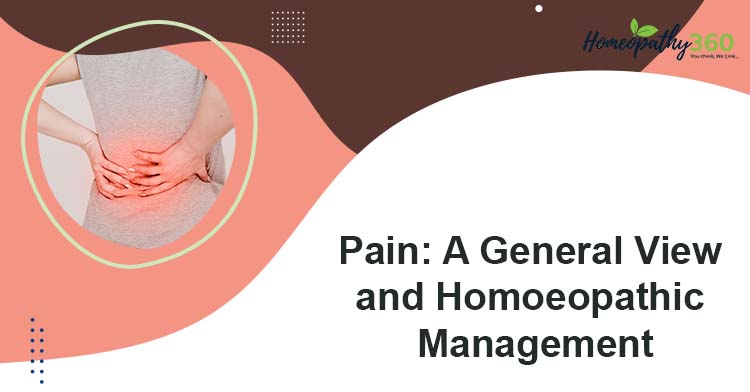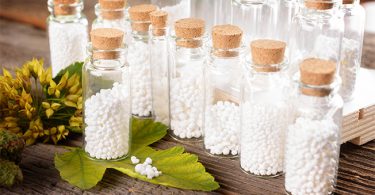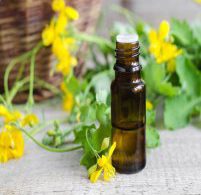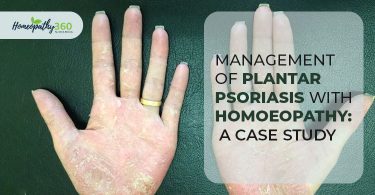
ABSTRACT
Pain is a localised or generalised unpleasant bodily sensation or complex of sensations that causes mild to severe physical and emotional distress which results from bodily disorder. It is the presenting complain of many internal diseases. This article aims to present a general idea about pain and will help the neophytes to select appropriate homoeopathic medicine for patients suffering from pain.
KEYWORDS: Pain, homoeopathic management
ABBREVIATIONS: before christ (BC), glycine and γ-aminobutyric acid (GABA), chronic widespread pain (CWP), visual analog scale (VAS), numeric rating scale (NRS)
INTRODUCTION:
Pain is defined as “an unpleasant sensory and emotional experience associated with actual or potential tissue damage or described in terms of such damage”. It is one of the most common symptoms for which people seek health care advice. Our understanding of the mechanism of pain has evolved considerably from Hippocrate’s suggestion in 450 BC that pain arises as a result of an imbalance in the vital fluids. We now know that pain is a complex symptom that is influenced and modified by many factors. The perception of pain as a symptom is dependent not only on sensory inputs but also on their cognitive reaction to pain, their emotional states, underlying diseases and social and cultural backgrounds [1].
Chronic pain is defined in several ways: pain not associated with cancer or other medical conditions that persists for more than 3-6 months; pain lasting more than 1 month beyond the course of an acute illness or injury or pain recurring at interval of months or years [2].
MECHANISM AND MEDIATORS INVOLVED IN PAIN PROCESSING [1]
Peripheral nerves: Peripheral nerves contain several types of neurons which can be classified into two groups depending on whether they are surrounded by a myelin sheath or not. Myelinated neurons have a fast conduction velocity and are responsible for transmission of various sensory signals such as proprioception, light, touch, heat and cold, and the detection of localised pains such as pin prick. Unmyelinated fibres have a slower conduction velocity and are responsible for transmitting diffused and poorly localised pains as well as other substances.
Spinal cord: Sensory neurons through their central termination, synapse with second order neurons in the dorsal horn of the spinal cord. Considerable modulation of pain messages occurs at this site. Several neurotransmitters are involved in pain processing at this level. They include amino acids such as glycine and γ-aminobutyric acid (GABA) which are inhibitory and glutamate which is excitatory.
Central processing of pain: The signals transmitted by second order neurons in the spinal cord are relayed to the sensory cortex by third order neurons, which synapse with second order neurons in the thalamus. At this site, perception of pain is influenced by interaction between range of structures in the brain, where sensory, cognitive and emotional aspects are integrated. This is termed as the pain neuro-matrix. Signals with the neuro-matrix are multidirectional in nature.
Sensitization: It is the key feature of pain processing and refers to the fact that both peripheral and central nervous systems adapt rapidly to the presence of pain response to tissue damage. This adaptive process is called neural plasticity. Peripheral sensitization can occur in association with some clinical conditions including sepsis, cancer, inflammatory diseases, injury, surgery and obesity. The final common pathway by which sensitisation takes place is inflammation. Central sensitisation may also take place at the level of spinal cord in response to a sustained painful stimulus. It can occur actually and rapidly such as immediately after surgery or may progress to chronic infection, cancer, repeated surgery or multiple traumatic episodes.
Genetic determinants of pain perception
There are marked ethnic and individual variations in how people respond to painful stimuli and studies on pain have shown that the heritability of chronic widespread pain (CWP) ranges between 30% to 50%. In general population, the response of pain and perception of pain are most likely due to a complex interaction between genetic and environmental influences [1].
TYPES OF PAIN [2]
- Nociceptive (somatic) pain: It is linked to tissue damage to the skin, musculoskeletal system or viscera (Visceral pain), but the sensory nervous system is intact, as in arthritis or spinal stenosis. It can be acute or chronic.
- Neuropathic pain: It is the direct consequence of a lesion or disease affecting the somato-sensory system. Neuropathic pain may become independent of the inciting injury, becoming burning, lancinating or shock- like in quality. It may persist even after healing from the initial injury has occurred.
- Central sensitisation pain: In this type of pain, there is alteration of central nervous system processing of sensation leading to amplification of pain signals. There is a lower pain threshold to non-painful stimuli, and the response to pain may be more severe than expected.
- Psychogenic pain: It involves many factors that influence the patient’s report of pain-psychiatric conditions like anxiety or depression, personality and coping style, cultural norms and social support systems.
- Idiopathic pain: It is the pain without an identifiable aetiology.
Pain is to be analysed in following ways [3]:
- Site
- Character and severity
- Duration
- Frequency and periodicity
- Radiation
- Aggravating factors
- Relieving factors
- Associated factors
INVESTIGATIONS [1]
Pain can be a presenting feature of a wide range of disorders. However, with most chronic pain syndrome, investigations are negative and diagnosis is made on the basis of clinical history and exclusion of other causes. Specific investigations that are useful in assessment of selected patients with chronic pain are-
- Magnetic resonance Imaging (MRI)
- Blood tests
- Quantitative sensory testing
- Nerve conduction studies
- Nerve blocks
- Pain scoring systems
Assessing severity of pain [2]
Three scales are common for assessing severity of pain: visual analog scale (VAS), numeric rating scale (NRS) and Wong-Baker FACES pain rating scale. In later two scales, pain rating is done from 1 to 10. Numerous more detailed multi-dimensional tools like the brief pain inventory and the McGill pain questionnaire are also available, but take longer time to apply. The Wong-Baker FACES pain rating scale can be used by children as well as patients with language barriers or cognitive impairment.
Principles of pain management [1]
Effective management of chronic pain depends partly on the underlying cause but some principles can be applied. In general terms, the treatment goals are to:
- Educate patients;
- Promote self-management;
- Optimise function;
- Enhance quality of life;
- Control pain.
Physical therapy can be done in following ways for self-management of chronic pain-
walking, gym work, yoga, exercises, hydro therapy, swimming etc. Psychotherapy aims to increase coping skills and improve quality of life. It can be delivered in one-to-one session, group sessions, multi-disciplinary pain management program or web-based or telephone-based programs [1].
HOMOEOPATHIC MANAGEMENT
Homoeopathy is a system of treatment in which patients are treated according to its law “similia similibus curentur”. After thorough case taking, a simillimum is selected basing on totality of symptoms of the patient. Management of patients with pain has to follow this principle. However, the followings are some of the first and second grade medicines that are most frequently used for relief of pain.
First grade medicines for pain in general are: ARSENICUM ALBUM, BELLADONNA, BRYONIA ALBA, CHAMOMILLA, COFFEA CRUDA, COLOCYNTHis, HYPERICUM PERFORATUM, PLUMBUM METALLICUM, TARENTULA CUBENSIS.
Second grade medicines are: Agaricus muscarius, Arnica montana, Berberis vulgaris, Cantharis vesicatoria, Colchicum autumnale, Eupatorium perfoliatum, Hepar sulphuricum, Kalmia latifolia, Lycopodium clavatum, Magnesia phosphoricum, Medorrhinum, Mercurius solubilis, Nux vomica, Phytolacca decandra, Pulsatilla nigricans, Rhododendron chrysanthum, Rhus toxicodendron., Sulphur, Syphilinum, Veratrum album [4].
- Agaricus muscarius[5]
- Pain sore aching, on lumbar and sacral region; during exertion, in day time, while sitting; every motion or every turn of body causes pain in spine; single vertebra sensitive to touch.
- Arnica montana [5,6]
- Sore, lame, bruised feeling all over the body as if beaten; traumatic affections of muscles. Nervous, can’t bear pain, whole body oversensitive.
- Everything on which he lies seems too hard, keeps on moving from place to place in search of soft spot.
- Gout and rheumatism with great fear of being touched or struck by persons coming near him.
- Pains are paralytic; sudden shifting pain from joint to joint; parts become sore after the pain with great prostration and tired feeling.
- Arsenicum album [5,7]
- Burning pain, the affected parts burn like fire, as if hot coals are applied to parts, > by heat, hot applications.
- Burning pain in stomach, bladder, vagina, in lungs, in throat and in all mucous membranes.
- Great prostration, rapid sinking of vital force, fainting.
- Belladonna [6]
- Severe neuralgic pain that comes and goes suddenly with fullness and congestion.
- Pains are throbbing, sharp, cutting, shooting or clawing of maddening severity; coming and going in repeated attacks.
- Chamomilla [5]
- Pain seems unendurable, drives to despair; < by heat, before midnight, evening; with heat, thirst, fainting with numbness of affected parts; eructation >.
- Coffea cruda [5,6]
- Coffee increases the sensibility of nerves making them overexcitable and oversensitive; special senses become over acute; emotions, especially joy and pleasurable surprise, produce threatened illness.
- Pains are felt intensely; seem almost insupportable, driving patients to despair (Acon., Cham.); tossing about in agony.
- Oversensitiveness; all the senses are acute- sight, hearing, smell, taste, touch (Bell., Cham., Op.).
- Colocynthis[5]
- Agonising pain in abdomen causing patient to bend double, with restlessness, twisting and turning to obtain relief, > by hard pressure.
- Pain: worse after eating or drinking; compels the patient to bend double.
- Sciatica: crampy pain in hip, as though screwed in a vise; lies upon affected side.
- Shooting pain, lightening shocks, down the whole limbs, left hip, left thigh, left knee, into left popliteal fossa.
- Hepar sulphuris calcareum [5.6]
- Oversensitive, physically and mentally; slightest cause irritates him.
- Oversensitive to all impressions- to cold, pain, touch, noise, odor, draught of air; slightest pain causes fainting.
- Pains are sore, sticking like sharp splinters.
- Hypericum perforatum [6]
- Injury to parts rich in sentient nerves, especially fingers, toes, matrix of nails.
- Laceration; when intolerable, violent, shooting, lancinating pain shows nerves are severely involved.
- Injury to the brain and spinal cord or after-effects from such injury.
- Very painful sore parts, occiput, coccyx, etc.
- Pains extend towards the trunk or down the sides with crawling and numbness.
- Neuritis of head or chest, in epigastrium, inter-scapular spine, finger tips, etc.
- Kalmia latifolia [5]
- Pains sticking, darting, pressing, shooting in a downward direction, attended or succeeded by numbness of affected parts (Aconitum napellus, Chamomilla, Platinum metallicum).
- Rheumatism: pain intense changing place suddenly, going from joint to joint; hot, red, swollen, < from least motion.
- Magnesia phosphorica [5]
- Pain: sharp, cutting, stabbing, shooting, stitching, lightening like incoming and going (Belladonna); intermittent paroxysms becoming almost unbearable, driving patient to frenzy; rapidly changing place (Lac-c., Puls.), with a constricting sensation (Cactus grandiflorus, Iodum, Sulphur), cramping pain.
- Neuralgic affections of stomach, abdomen and pelvis (Caulophyllum thallictroides, Colocynthis) [5].
- Plumbum metalicum [5]
- Excessive pain in abdomen, radiating to all parts of body.
- Violent colic, sensation as if abdominal wall was drawn by a string to the spine.
- Pulsatilla nigricans [5,8]
- Pain: drawing, tearing, erratic, rapidly shifting from one part to another; accompanied with constant chilliness; the more severe the pain, more severe the chill; appears suddenly, and leaves gradually; worse on first motion.
- Rhus toxicodendron [5]
- Pains as if sprained, as if a muscle or tendon was torn from its attachment; as if bones were scraped with a knife; worse after midnight and in wet, rainy weather; worse during rest and first motion, relieved by continued motion; affected parts sore to touch.
- Tarentula cubensis [5]
- Abscesses, boils, felons: affected parts become bluish; atrocious, burning pain; the agony of a felon, compelling to walk on the floor for nights, < touch of affected parts, > by rubbing the affected parts.
- Syphilinum [5]
- Pains from darkness to day light; begin with twilight and end with daylight.
- Pains increase and decrease gradually); shifting pain; requires frequent change of position.
The medicines can be selected basing on nature of pain, sensations and other accompanying factors, stated below [8] :
- Cramping pain- Cuprum metallicum, Colocynthis, Magnesia phosphoricum.
- Burning pain- Arsenicum album, Cantharis vesicatoria, Capsicum annuum, Phosphorus, Sulphuricum acidum.
- Coldness (sensation)– Calcarea ostrearum, Arsenicum album, Cistus canadensis, Heloderma
- Coldness (objective)- Camphora, Secale cornutum, Veratrum album, Heloderma
- Fullness sensation- Aesculus hippocastanum, China officinalis, Lycopodium clavatum
- Bearing down sensation- Belladonna, Lilium tigrinum, Sepia officinalis
- Emptiness sensation- Cocculus indicus, Phosphorus, Sepia officinalis
- Bruised, soreness- Arnica montana, Baptisia tinctoria, Eupatorium perfoliatum, Pyrogenum, Ruta graveolens
- Constriction- Cactus grandiflorus, Colocynthis, Anacardium orientale
- Prostration or weariness- Gelsemium sempervirens, Picricum acidum, Phosphoricum acidum.
- Numbness- Aconitum napellus, Chamomilla, Platina, Rhus toxicodendron.
- Erratic pains– Lac caninum, Pulsatilla nigricans, Tuberculinum
- Sensitiveness to pain- Aconitum napellus, Chamomilla, Coffea cruda
- Sensitive to touch- China officinalis, Hepar sulphuricum, Lachesis mutus
- Bone pains- Aurum metallicum, Asafoetida, Eupatorium perfoliatum, Mercurius solubilis
- Sticking or stitching pains- Bryonia alba, Kalium carbonicum, Squilla maritima
- Pulsation or throbbing- Belladonna, Glonoinum, Melilotus alba
- Hemorrhages (Passive)- Hamamelis virginica, Secale cornutum, Crotalus horridus, Elaps corillinus
- Hemorrhages (Active)- Ferrum phosphoricum, Ipecacuanha, Phosphorus
- Emaciation- Iodium, Natrum muriaticum, Lycopodium clavatum, Sarsaparilla
- Psoric constitution – Sulphur, Psorinum
- Sycotic constitution – Thuja occidentalis, Nitricum acidum, Medorrhinum
- Syphilitic constitution – Mercurius solubilis, Potassium iodide, Syphilinum
ACKNOWLEDGEMENT
The authors are thankful to Dr Bijayalakshmi Behera, MD (Hom.), 3rd year, Department of Materia Medica, Dr Abhin Chandra Homoeopathic Medical College & Hospital, for her valuable suggestions to improve the quality of article.
REFERENCES:
- Ralson SH, Penman ID, Strachan MWJ, Hobson RP. Davidson’s Principles and Practice of Medicine. 23rd ed. New Delhi: Elsevier; 2018.
- Bickley LS. Bate’s Guide to Physical Examination and History Taking. South Asian ed. New Delhi: Wolters Kluwer (India) Pvt. Ltd.; 2019.
- Alagappan R. Manual of Practical Medicine. 6th ed. New Delhi: The Health Sciences Publisher; 2018.
- Murphy R. Homoeopathic Medical Repertory. 13rd revised ed. Delhi: B Jain Publishers(P)Ltd; 2005.
- Allen HC. Keynotes and Characteristics with Comparisons of some of the Leading remedies of the Materia Medica with Bowel nosodes. 8th ed. Delhi: B Jain Publishers(P)Ltd.; 2002.
- Phatak SR. Materia Medica of Homoeopathic Medicines. 2nd revised and enlarged ed. Noida: B Jain Publishers(P)Ltd.; 1999.
- Boericke W. Pocket Manual of Homoeopathic Materia Medica and Repertory. Reprint ed. New Delhi: B Jain Publishers(P)Ltd.; 1998.
- Nash EB. Leaders in Homoeopathic Therapeutics with Grouping and Classification.6th ed. Delhi: B Jain Publishers(P)Ltd.; 2008.





